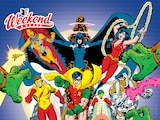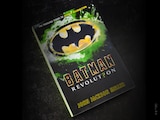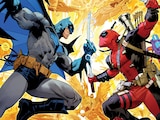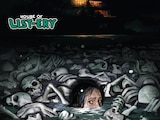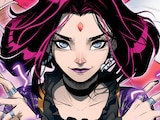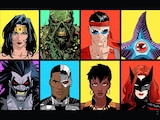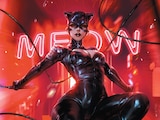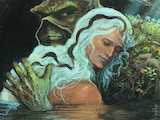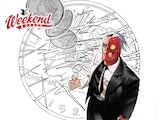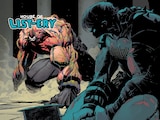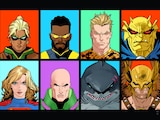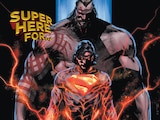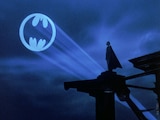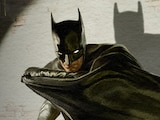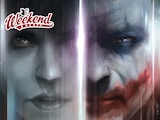Every June since 2018, it’s been my honor to showcase queer characters and voices for Pride Month in DC news, highlighting LGBTQIA+ storylines, history and creators bringing their personal experiences to the DC Universe and its diverse audience. Thanks to a number of supportive editors, my role on the “pride beat” has become a staple of my annual comics coverage and has opened doors to many of the most positive and vibrant people I’ve ever met in the comics community. With so many of our social institutions choosing to ignore or disregard anyone who doesn’t fit a narrow definition of an acceptable way to live or love, Pride Month is not just a celebration, but an integral mechanic of survival. It’s a time when marginalized people on the sexual and gender spectrum can all check in to support one another, and affirm not just their validity, but their basic right to existence—a concept which to this day is not always taken for granted. One of the most meaningful ways to do this is through the power of story: to show our heroes and icons contending with the same issues of identity we feel ourselves.
This is exactly why last year’s DC Pride special felt so important to so many of us, and why it’s so meaningful to have it back again this year. DC Pride represents a commitment to acknowledging a far wider representation of who our heroes can be by showcasing them in an anthology helmed by queer creators themselves. Every year brings more room for stories about gay heroes, bi heroes, trans heroes, nonbinary heroes. But even as we see more diversity in our heroes than ever before, it still doesn’t cover everybody. Until this year, it still didn’t cover me.
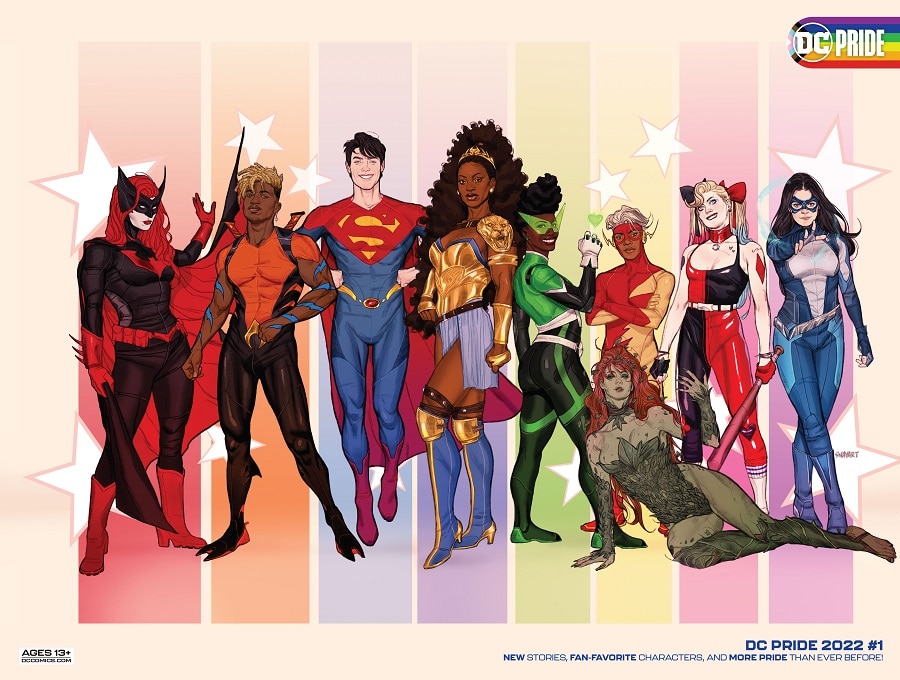
When I was growing up, I thought I had invented the word “asexual.” I had never heard of anyone else who didn’t feel physical attraction to anyone, regardless of sex. I recoiled when Batman strayed from his mission to fall for the charms of Catwoman and cheered as he resisted Poison Ivy. When the media around me insisted that all men wanted, universally, was “just one thing,” I couldn’t for the life of me figure out why they wanted it. The adults I knew called me a “late bloomer.” The kids were…less kind. I wouldn’t learn there was anyone else in the world like me until I was in my twenties. In my awkward teens, when I couldn’t help but imagine that something about me was fundamentally broken, well…a hero really could have helped.
In 2013, DC launched a comic by Gail Simone and Freddie E. Williams called The Movement about a team of radical young heroes representative of backgrounds rarely seen in comics. One member of the team, the geokinetic Tremor, was a spy who had been embedded there by Amanda Waller to report on their activity. She was also the first character in DC history to identify as asexual.

But while Tremor eventually defected to the Movement in earnest, her background as an infiltrator into this mostly queer community fostered an unpleasant feeling. As an asexual person, I felt anxiety for years that I somehow wasn’t “queer enough” for pride—that because I had no sexual feelings, pride in my identity was less important than others. We had no significant rights to fight for, no vast social machine which insisted that our life was immoral. We could just fade away and pretend not to exist. Just like the world insists we don’t.
Unlike her former teammates, Tremor has showed up to the past couple major DC Pride presentations, as a member of “JLQ”—a new team of young, queer DC characters. Sure, she’s mainly in the background, and rarely gets more than a line or two, but she’s there. At one point in ‘Tis the Season to Be Freezin’, Tremor voices her surprise that she was even invited. Which, as a person who has all-too-often heard (incorrectly) that the “A” in “LGBTQIA” stands for “Ally,” felt uncomfortably real.

What I had always longed for, what felt like an impossible dream, was a hero whose asexuality was a cornerstone of their identity, as much as Batwoman or Dreamer’s sexualities and gender identities are to theirs. A hero with a rich and complex history with sexuality which helped shape them into the person they are as much as people like me have had to contend with a culture which took sexual attraction as an inalienable part of the human experience. As it turns out, much to my delight, that does in fact describe a fan-favorite hero who’s been a cover star since 1994: Connor Hawke, son of Green Arrow.
From his very introduction in Green Arrow #0, Connor’s relationship to sexuality has been one of the things that separated him from his often-libidinous father. Frequently played for comedy as he inherited the mantle of the Green Arrow, the very attractive Connor Hawke seemed “clueless” when it came to the advances of women around him, failing to comprehend their subtle advances, and outright rejecting the more overt. When Roy Harper confronts Connor about this in 2003’s Green Arrow #32, Connor and Roy have a conversation about his sexuality which, while frank, leaves a lot of room for interpretation. Connor insists he feels no need to “chase” women, but still experiences romantic feelings.

The idea that one can experience love, without feeling physical desire, is something that a lot of people have a difficult time getting their heads around. It’s exactly why, one day in 6th grade, I felt like I had to invent the word “asexual.” Like me, Connor Hawke had a feeling about who he was before he even had the language for it.
In 2011, Oliver Queen got aged down a bit, and as a result, his adult son disappeared from the comics for a while. But Connor returned after a long absence last year as a new friend of Damian Wayne’s in Robin. It all set the stage for “Think of Me,” a Connor Hawke story in this year’s DC Pride special. A story written and drawn by Ro Stein and Ted Brandt, two asexual comic creators themselves. One which, in just a few deeply meaningful pages, gives Connor the decades-delayed reckoning and acknowledgment of his own sexual identity which he, and an often-ignored population of comic readers, have been longing to see in print for a long, long time.

Connor Hawke, like many of my favorite characters, isn’t just a hero, but a philosopher. He’s a deeply thoughtful figure who would rather trade Zen koans than costume-based puns in the heat of battle. A person to whom archery isn’t a means to an end, but a form of meditation. Connor Hawke’s lack of physical attraction has never meant he was broken, as I once feared about myself. In his spiritual pursuit of personal enlightenment, it’s been an asset. In “Think of Me,” and retroactively through his history, Connor Hawke illustrates that, like all forms of queerness, asexuality is not an aberration, but a gift. That a lack of desire for physical intimacy makes us no less worthy of love.
Simply by existing, by appearing to show others growing up with the same doubt in themselves that I once had, Connor Hawke is a hero. Connor Hawke is my hero. And as I take my place this year in the DC Pride parade once more, I feel no shame.
DC Pride 2022 #1, featuring "Think of Me" by Ro Stein and Ted Brandt, is now available in print and on DC UNIVERSE INFINITE.
Alex Jaffe is the author of our monthly "Ask the Question" column and writes about TV, movies, comics and superhero history for DCComics.com. Follow him on Twitter at @AlexJaffe and find him in the DC Community as HubCityQuestion.
NOTE: The views and opinions expressed in this feature are solely those of Alex Jaffe and do not necessarily reflect those of DC Entertainment or Warner Bros.

